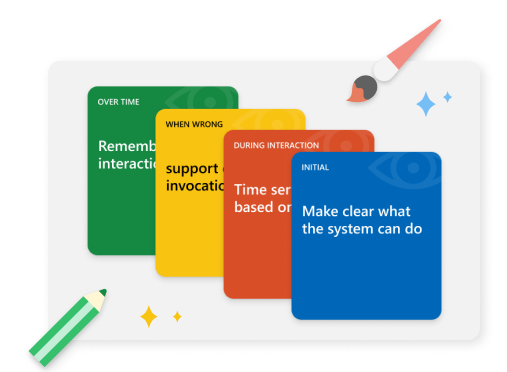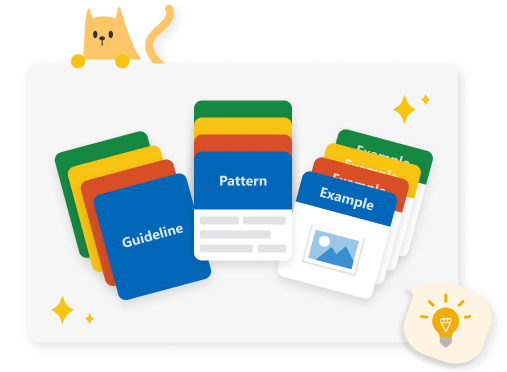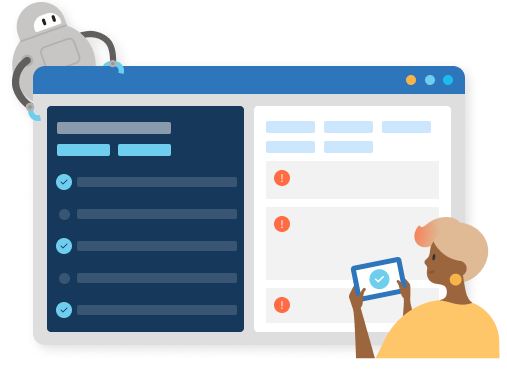Hands-on tools for building effective human-AI experiences

The HAX Toolkit is for teams building user-facing AI products. It helps you conceptualize what the AI system will do and how it will behave. Use it early in your design process.

Guidelines for Human-AI Interaction
Best practices for how AI systems should behave during interaction. Use them to guide your AI product planning.

HAX Design Library
Learn the Guidelines for Human-AI Interaction and how to apply them, using patterns and examples.

HAX Workbook
Work together with your team to prioritize which Guidelines to implement in your product.

HAX Playbook
For applications using natural language processing, identify common failures so you can plan for mitigating them.
Get started with the HAX Toolkit
The HAX Toolkit is flexible. You can mix and match tools depending on your needs, use case, and where you are in your product’s life cycle. But if you need guidance, here are our suggestions for getting started:
Begin here
1. Learn. Familiarize yourself with the Guidelines for Human-AI Interaction. They prescribe how an AI system should behave. Read an overview of the Guidelines and browse the Design Library to see Design Patterns for implementing the Guidelines and Examples.
2. Plan. Bring your team together and go through the HAX Workbook. The HAX Workbook is a discussion and planning guide. Your HAX Workbook session will result in prioritized work items for which Guidelines to implement first, and how.
3. Design. Use design patterns and examples in the Design Library to identify ways to apply the Guidelines.
4. Prototype. If you’re creating a product that uses natural language processing (NLP), use the HAX Playbook to identify how the AI system will fail so you can plan & prototype solutions for helping users recover from inevitable failures.
Learn how to use the HAX Toolkit to create human-centered AI
AI builders tell us,
“If you can institutionalize the HAX Toolkit into the design parts of products, you give people an opportunity to build a much better product in gen one.”
